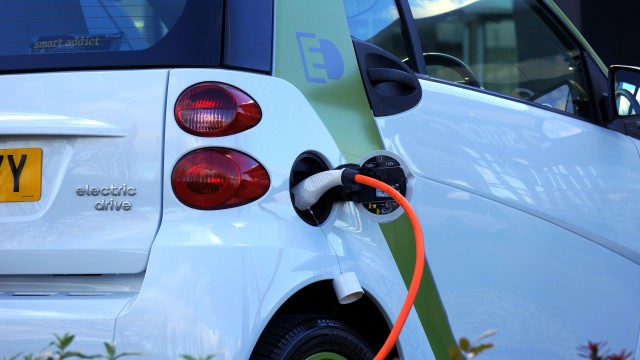The Belgian “Mobility Budget” and “Mobility Allowance” explained

The Belgian tax treatment of company car is attractive to both employers and employees, compared to taxation of gross salary payments. It is one of the most popular fringe benefits. About 14% of all employees in private companies are benefiting this advantage.
In an attempt to move employees away from car use, the federal government has taken 2 legal initiatives:
- The mobility allowance, effective since march 2018
- The mobility budget, ready for submission to the parliament. Planned effective date is January 1st 2019
The Mobility Allowance (“Cash4car”)
This is a monthly cash amount paid by the employer to the employee, as a compensation for the full trade-in of the company car (passenger cars only).
The main characteristics of this system are:
- The employee nor the employer are obliged to go for the Mobility Allowance. It is a free choice between the 2 parties.
- The employee must have had a company car for at least 12 months during the past 36 months, of which 3 months uninterruptedly before the application for a Mobility Allowance.
- The employer must have a system of company cars in place since at least 3 years
- Employees only, not valid for independents and independent company directors
- Yearly amount of the Mobility Allowance = list price of the vehicle x 17.14% (if no fuel card included with current company car), x 20.57% (if fuel card included).
- A benefit of all kind is levied at 4% of 6/7 of the list price of the vehicle (with the same minimum as the benefit in kind for company cars).
- The employer pays the same solidarity contribution for social security as for the current company car
- No other commuting allowances can be paid in addition
- A change back to a company car is always possible.
- The Mobility Allowance does not have to be spent on mobility, it is a cash amount to be spent freely by the employee.
The net amounts resulting from this calculation are not high enough for most commercial vehicle users to persuade them to trade in their vehicle, although specific profiles may consider the exchange. Especially for those who do little commuting and drive a limited number of private kilometers with a relatively expensive car, the exchange could be financially advantageous.
The success of the Mobility Allowance is very limited so far.
The Mobility Budget
The government is planning to make this law proposal effective as of Jan 1st 2019.
This alternative for / addition to the company car is a separate system from the Mobility Allowance (but can not be combined for the same employee).
The main characteristics of this proposal are:
- The employee nor the employer are obliged to go for the Mobility Budget. It is a free choice between the 2 parties.
- The employee must have had a company car for at least 12 months during the past 36 months, of which 3 months uninterruptedly before the application for a Mobility Budget. When starting in a new job in which a company car is part of the salary package, this condition does not apply.
- employer must have a system of company cars in place since at least 3 year
- Employees only, not valid for independents and independent company directors
- Amount of the budget per year = the equivalent of the total cost of ownership (TCO) of the company car. This the total annual cost the employer bears for holding the company car and all costs associated (fuel, insurance, maintenance, taxes,…)
- The budget can be spent by the employee on 3 types of expenses (3 “pillars”). The employee can spend the budget on any combination of the pillars or on one single pillar in particular.
- Pillar 1: an environmentally friendly company car, in conformity with the latest Euro norm and with a maximum CO2-emission of 95 grams per km. Tax treatment is the classic treatment for company cars. Less than 5% of the current new cars on offer do meet these criteria, including zero emission vehicles. In addition, the emissions of this new car cannot exceed the emissions of the current company car, so for example when already driving a zero emission car, only another zero emission car can be chosen. In practice, the TCO of this car should be lower than the TCO of the current car, if not there is no balance to be spent to the other pillars.
- Pillar 2: amount that can be spent by the employee on alternative and sustainable modes of transport – fully untaxed (no benefit in kind whatsoever for the employee and fully deductible to the employer). Housing costs for housing facilities near the place of employment are also eligible.
More specifically, these items are included:- Vehicle Rental for a maximum of 30 days per year
- Soft mobility, i.e. purchase, maintenance and mandatory equipment of bicycles, motorized bicycles and mopeds as defined in the general regulations on road traffic police and electric motorcycles.
- Public transport
- Season tickets concerning commuter traffic, related to the employee in person. School subscriptions for the children, for example, are explicitly excluded.
- All single fare tickets within the European Economic Area. This also means, for example, that a ticket for the Thalys or the Eurostar is eligible. These tickets may be used by family members.
- Organized common transport - Can be organized by the employer or by third parties. This includes offerings such as the office bus
- Shared solutions : Carpooling, car sharing, sharing bikes, shared scooters, ... and also taxis and car rental with driver
- Electric motorcycles
- Housing costs for houses located within a (bird's eye view) radius of 5km from the normal place of employment (Rental fees and Interests on mortgage loans). This also applies to employees who already live less than 5 km from work, so when trading their company car, they can spend the pillar 2 fully tax-exempt on the interest of their loans or rent.
- Bicycle allowances for work commuting and provision of a bicycle by the employer
- Changes to this list can be made through Royal Decree.
- Pillar 3: cash balance to be paid at the end of the year: no income tax applicable, yet a social security tax of 38,07% will be deducted.
- No other commuting allowances can be paid in addition (except if an additional amount of this kind was in place on top of the company car before the switch to a Mobility Budget)
- A change back to a company car is always possible.
General rules for both systems:
- Only one car can be considered for the calculations, but all current company cars must be traded in by the employee.
- Prohibition to convert gross salaries fully or partially into a Mobility Budget or Mobility Allowance with the sole aim of optimizing wages and / or wage costs
- The employer is not allowed to change his policy for the allocation of company cars in order to allocate a larger mobility budget. Moreover, that policy must have been in force for at least 36 months. An exception is provided for employers who have not been active since 36 months.

(Photos by JESHOOTS.com en Mikes Photos from Pexels)
